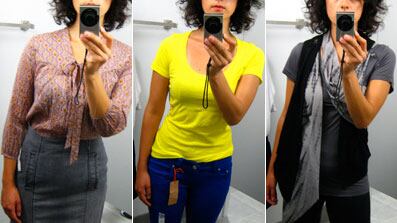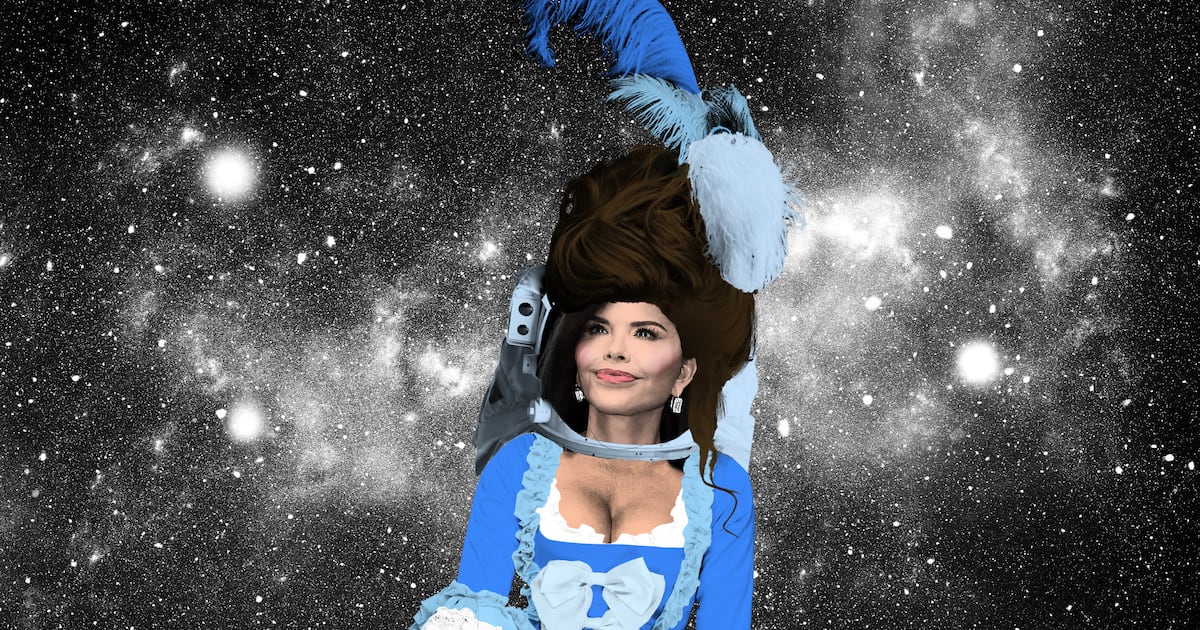The New York Times apologized on Sunday for its attack on the venerable department store as a haven for overweight polyester fiends. Renata Espinosa defends the store, and finds everyday couture. VIEW OUR GALLERY.
Last week, The New York Times’ “Critical Shopper” columnist, Cintra Wilson, reviewed the new J.C. Penney store in New York. Located in the Manhattan Mall on 34th Street across the street from Macy’s, Penney’s lands in a nexus of chain stores in the city and was a less obvious choice for Wilson’s scrutiny (compared to her usual jaunts at fashion temples like Prada and Balenciaga). But given the retail recession crunch and the more restrained buying habits as of late, it was a timely one.
In “Critical Shopper,” Wilson is known for her pithy and often scathing commentary about whatever store she’s visiting that week, painting a juicy picture of the kind of customer who might wear, say “a silk dress in gray-washed purple [that] might have been spun from the pelt of Barney the basalt-mining Dinosaur, or dyed with grape Kool-Aid in the Ganges.” (Answer: “tiny rich women and Japanese superhipsters” at Balenciaga.
View Renata’s J.C. Penney Couture

From the merchandise to the sales staff, no element at a store is left sacred or untouched—she takes the “critical” part of her title very seriously, but no more seriously than fashion takes itself. It’s refreshing to read someone unafraid to inject humor into a mostly humorless industry. She does what Sacha Baron Cohen should have done in Bruno, which is to bring the holy snobs of fashion back down to earth. But Bruno failed and took the lazy way out, humor-wise, by abandoning the fashion storyline ten minutes into the film and switching over to making fun of rednecks. And Wilson uncharacteristically failed, too, in her report on J.C. Penney, by being unnecessarily snarky at the expense of overweight people. Not surprisingly, she promptly found herself in the eye of an Internet maelstrom.
I also abhor generic fashion and I don’t believe that just because a store hawks something affordable and accessible, it’s suddenly newsworthy.
Essentially, Wilson concludes that J.C. Penney is a great place to shop if you’re average (over a size 10) and willing to settle for something less than great in the department of fashion. You’ll need to like polyester, (“a good 96 percent of the Penney’s inventory is made of polyester”) and because you’re a size 18 who can’t find a “a long psychedelic muumuu of a style generally worn by Rachel Zoe” or “a modified domino-print swing dress with padded shoulders.” For Wilson, J.C. Penney is a store that will appeal to clueless Middle American tourists who, for what they lack in taste, make up for in size: “No matter how many Grand Slam breakfasts you’ve knocked out of the park, Penney’s has a size for you.”
Wilson issues backhanded compliments about J.C. Penney’s merchandising strategy, like “The petites section features a bounty of items for women nearly as wide as they are tall,” she writes, while “the men’s Big & Tall section has shirts that could house two or three Shaquilles. And this is really, remarkably smart.” Because, after all, there are enough elitist boutiques in New York catering to skinny people. She also wonders why J.C. Penney didn’t bother to update their “ancient Helvetica Light logo,” with its “boring, even traumatically parental, associations.”
That J.C. Penney is boring and in the business of selling poorly executed versions of whatever is trendy is really Wilson’s main criticism of the store, as clearly she is someone way more likely to wax poetic over a near-scientific execution of a pencil skirt by Alexander McQueen than an ill-fitting (on her, anyway) Misses pantsuit at Penney’s. But this point was obscured by her comment about the mannequins being the most obese she’d ever seen, “like a headless wax museum devoted entirely to the cast of ‘Roseanne,’” one of the controversial lines that spurred the backlash.
Without a doubt, her attack on the supposedly plus-sized mannequins and her insinuation that J.C. Penney is a store for the fat and desperate was not well-finessed. However, I’m with Wilson on her other point. I also abhor generic fashion and I don’t believe that just because a store hawks something affordable and accessible, it’s suddenly newsworthy. It needs to also be good and offer something unique to justify a purchase; the landfills are overcrowded. Wilson argued that J.C. Penney’s niche would be in its sizing, but this is fashion we’re talking about, not Starbucks—it needs to be stylish, too.
So I went to J.C. Penney one evening after work for a little “Duchamping,” which is what a friend of mine calls shopping the “ready-mades” (after Marcel Duchamp’s idea that anything can be art if it’s positioned as such). Likewise, anything can be fashion if you know how to put it together, and I was confident that Wilson’s portrait of the store as a sea of mediocrity and supersizing could be proven wrong. I grew up in the “Middle America” that Wilson disparaged, where the only places to shop were malls of wall-to-wall beige carpeting and bland clothing to match, but armed with subscriptions to Vogue and Seventeen, I honed my own “runway to reality” versions of the things I read about there before that was a regular magazine feature.
To get to this J.C. Penney, you have to take an escalator down, not up, like you were getting on the subway. How New York! And to put it underground like that, how subversive! The store was nothing like the beige tile and incandescently-lit store I remembered from my youth—shiny black tile, track lighting and modern signage all looked very Bloomingdale’s to me, and there was nary an overweight mannequin in sight. But upon surveying a few racks of brightly printed knit tops, similar to the psychedelic muumuus Wilson described, a row of some very plain chunky sweaters and a section of cheap-looking chiffon bridesmaid-looking dresses, I was filled with doubt. Maybe she was right. Maybe mediocre was winning in the battle for the island, and I was an idealistic fool to try to give Penney’s any credit.
But when I spotted distressed “boyfriend” jeans from the I Heart Ronson collection—created for J.C. Penney by Charlotte Ronson—and something called Oxford and Regent, which looked like their version of Topshop, I knew that the informal back-to-school Teen Vogue challenge I’d given this particular Duchamping excursion would be in the bag. Sailor striped knits paired with the slouchy denim—very Jean Paul Gaultier. A tie-dyed vest half wrapped around my neck like a scarf, layered under another long black knit vest over rubberized leggings? A little Rick Owens, maybe. Who cares if the poufy skirt I found had an elastic waistband and was decidedly not Balenciaga? They’d never know the difference on the Lower East Side. Yes, I felt a little like Sandra Lee in the kitchen crafting something semi-homemade out of ingredients that finished second to the real thing. But you gotta feed the people somehow, and for now, it’s okay.
Renata Espinosa is the New York editor of Fashion Wire Daily. She is also the co-founder of impressionistic fashion and art blog TheNuNu and a sometimes backup dancer for "The Anna Copa Cabanna Show."






